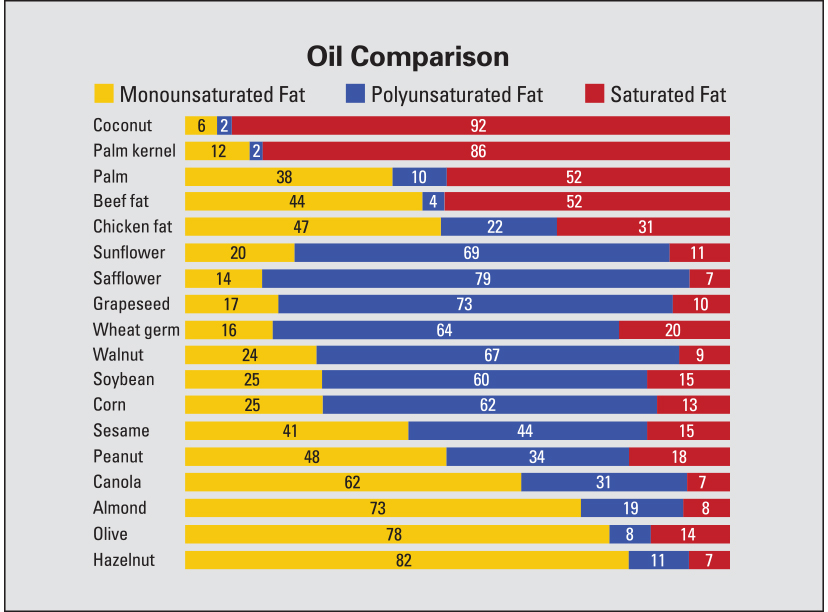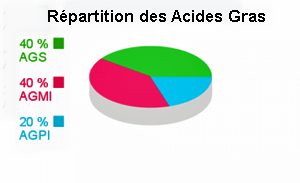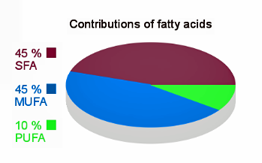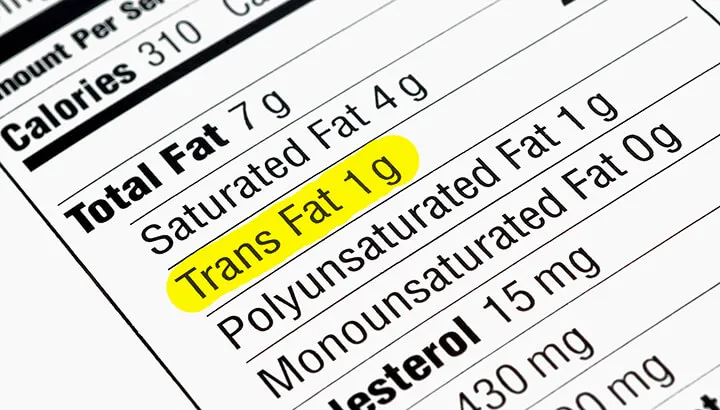suitable fat sources
-
Coconut oil is 92% saturated.

Interestingly, beef fat naturally contains trans fat.
-
@winters2 sounds like you’re trying to gain weight. if that is the case, why not just eat more of the foods you like (that happen to be bio energetic)? You’ll end up getting more calories/fat in a more appealing way. For example I’d make myself homemade piña coladas (light on the alcohol) with real coconut cream, or thai coconut curry (light on the spices)
Regarding dairy fat, i would concentrate more on butter and less on cream, because butter is usually less adulterated. -
Coconut Oil: Healthy or Not? Brief oriented summary.
- Anything in excess, whether coconut oil or any oil rich in PUFA, is harmful.
- Consumption exceeding the body's PUFA needs could have a long-term impact on metabolism (mitochondrial respiration: slowed metabolism) and weaken membranes (oxysterol formation) if stored. This will very often be the case if...
- A balanced intake of fatty acids should be around 40-40-20, rather than 20-30% SFA, 55-65% PUFA, and 10-20% PUFA, if you eat homemade food.
Note that anything above the body's needs is harmful, especially polyunsaturated fatty acids, which will be stored. Sooner or later, the bill will have to be presented. I would therefore aim for 10% PUFA, just to ensure basic needs.

Best contributions of fatty acids

- If you store (fat belly), it means you need to change something in the equation. Not necessarily the proportions above. Not everything is black or white.
More info:
The hype on coconut oil! (in French; translator needed but with English links for references)
http://mirzoune-ciboulette.forumactif.org/t1311-battage-mediatique-sur-l-huile-de-coco#14432
Here I hope to contribute to demystifying the “Dark Side of the New Force” (coconut oil)
-
-
@Mossy said in suitable fat sources:
that they don't have lard (pig fat) on that list.
43 mufa
9\1 pufa
47 sfa
See link above for the chart
NB: the ratio pufa variés if you give corn and soy or beet and grains. -
@winters2 said in suitable fat sources:
What are some peaty alternatives? Could I use macadamia nut oil in my fruit smoothies? Or something similar
Do you like and tolerate coconut? If so, you could use coconut milk in your smoothies. I use a lot of coconut milk, especially in smoothies. It’s easy to make in a blender or, if you live in the US, the brands MALK and Califia are made with the same simple ingredients (coconut, coconut water and salt). I get them at Whole Foods.
-
@LucH said in suitable fat sources:
that they don't have lard (pig fat) on that list.43 mufa
9\1 pufa
47 sfa
See link above for the chart
NB: the ratio pufa variés if you give corn and soy or beet and grains.Interesting, so with that ratio, that would fit the "Best Contributions" ratio you provided. I could guess that that ratio is for something like Iberico lard: "Pork is corn and soy free raised on the famous acorn-rich pasture of Spain." I would imagine basic, store-bought lard is bad, consisting of high pufa, e.g. corn, soy, etc.
-
@Mossy said in suitable fat sources:
I could guess that that ratio is for something like Iberico lard: "Pork is corn and soy free raised on the famous acorn-rich pasture of Spain." I would imagine basic, store-bought lard is bad, consisting of high pufa, e.g. corn, soy, etc.
Of course, beet type would be better than corn type food but I'd avoid to eat lean pork more than twice a week.
Peat didn't like pig meat much.
So I made a "little" search with ChatGPT, base on RP work.
I try to summarize it. if you want an extended answer, open a new post and leave a link here to be sure to find it back.
Part 1- Pork has High Linoleic Acid Content in fat.
- Monogastric Digestive System and Fat Composition.
Unlike ruminants, pigs lack the ability to convert unsaturated fats into more saturated forms through biohydrogenation. As a result, the fat composition of pork mirrors that of its diet, maintaining a high PUFA content even when fed non-corn and non-soy diets. - Potential for Endotoxin Contamination.
Pork, especially when not properly handled or cooked, can harbor pathogens and endotoxins that may contribute to inflammation and gut dysbiosis. Peat's caution extends to the potential for such contaminants, which can exacerbate metabolic disturbances. - Nutrient Imbalance and Amino Acid Profile
Pork, particularly lean cuts, may have an imbalanced amino acid profile, with higher levels of methionine relative to glycine. This imbalance can promote inflammation and oxidative stress. Peat suggests balancing such meats with gelatin-rich foods to provide a more favorable amino acid profile. - Hormonal and Metabolic Considerations
The consumption of pork fat, rich in PUFAs, can influence hormonal balance by promoting estrogen production and suppressing thyroid function. Peat advocates for dietary choices that support thyroid health and maintain hormonal equilibrium.
Part 2
I’ve asked:
I think Ray peat doesn’t like much pork meat even when pigs aren’t fed with corn and soy (too much PUFA) but with beet and some grains and nuts. It hasn’t much to do with fatty proportion SFA 47, MUFA 43, PUFA 10 % (w3 1; w6 9). Could you find an explanation?
Take time to make a deep research.
Concern:
The citations you gave on the right side of the PC screen are not easily available: I have to click individually on the source. Not practical and I waste time.
Demand:
I’d like to find these citations back for these statements:
Key Observations
• Methionine/Glycine Balance: Ray Peat often criticizes high methionine intake without adequate glycine (found in gelatin, skin, and cartilage). Pork tends to be a bit higher in methionine than beef or lamb, making it slightly more "imbalanced" by Peat’s standards.
• Pro-inflammatory Potential: This methionine dominance, without counterbalancing collagen-rich cuts or gelatin, might promote inflammation and methylation stress.
• Tryptophan: Pork also has slightly more tryptophan, which in excess may contribute to serotonin overload — another concern Peat has linked to mood, energy, and gut issues.ChatGPT answers (with citations from articles).
- Methionine/Glycine Imbalance:
Peat has discussed the methionine-to-glycine balance in his articles and interviews, especially highlighting the importance of collagen-rich foods (like bone broth and gelatin) for counteracting high methionine diets. - Pro-inflammatory Potential of High Methionine Diets:
Peat links high methionine intake to increased oxidative stress, inflammatory pathways, and its potential to promote aging. - Tryptophan and Serotonin:
Peat highlights how excess tryptophan (found in higher amounts in pork) can lead to serotonin overload, contributing to mood imbalances and metabolic dysfunction.
NB: 6 pages have been summarized here.

-
Put in excerpt
3. Potential for Endotoxin Contamination
Pork, especially when not properly handled or cooked, can harbor pathogens and endotoxins that may contribute to inflammation and gut dysbiosis. Peat's caution extends to the potential for such contaminants, which can exacerbate metabolic disturbances.
Note's editor (LucH): Even when well-cooked endotoxins may remain. Supposition / deduction here, of course.
4. Nutrient Imbalance and Amino Acid Profile
Pork, particularly lean cuts, may have an imbalanced amino acid profile, with higher levels of methionine relative to glycine. This imbalance can promote inflammation and oxidative stress. Peat suggests balancing such meats with gelatin-rich foods to provide a more favorable amino acid profile. -
@LucH More good information. Thank you.

